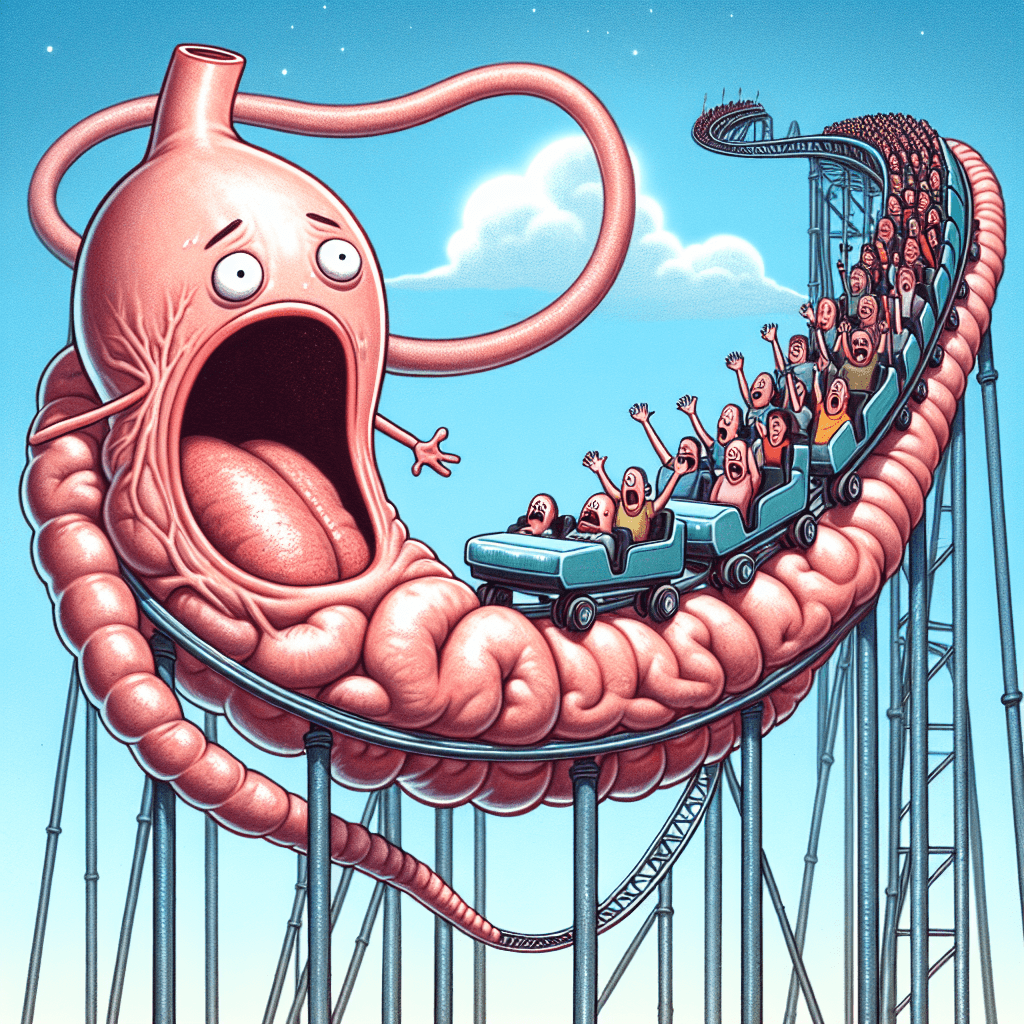What actually causes that stomach-in-your-throat feeling on a roller coaster
It’s not your stomach flying up into your throat; it's the bizarre and fascinating sensation of your internal organs being momentarily left behind in zero gravity.


Too Long; Didn't Read
That stomach-in-your-throat feeling is your internal organs briefly floating. When the coaster drops, your body is pulled down, but your organs, which are not strapped in, lag behind due to inertia, creating the sensation of them rising.
The Physics of Fun: What Actually Causes That Stomach-in-Your-Throat Feeling on a Roller Coaster?
The rhythmic clack-clack-clack of the lift hill builds the tension. You reach the peak, suspended for a breathtaking moment between the sky and the ground. Then, the plunge. As you plummet down the impossibly steep drop, a familiar, electrifying sensation takes over—that unmistakable feeling of your stomach leaping into your throat. It's a hallmark of any great roller coaster, a feeling both terrifying and exhilarating. But what is actually happening inside your body during that moment of freefall? It’s not just an illusion; it's a fascinating display of physics and biology working in tandem. This post will break down the science behind that iconic "stomach drop" feeling.
The G-Force Effect: More Than Just Speed
While the incredible speed of a roller coaster is a huge part of the thrill, the stomach-lurching sensation is primarily caused by something else: rapid changes in acceleration, which we feel as G-forces. G-force is a measure of acceleration felt as weight.
- Positive Gs: When you accelerate upwards or whip around a tight corner, you feel pressed into your seat. This is positive G-force, making you feel heavier than normal.
- Negative Gs: The "stomach in your throat" feeling is the result of negative G-force. This occurs when you crest a hill or, most intensely, when you go down a steep drop.
During that first big drop, the coaster car accelerates downwards at a rate close to the acceleration of gravity itself (9.8 m/s²). For a brief moment, you are in a state of near freefall. This creates a feeling of weightlessness, or negative Gs, because the seat is essentially falling away from you at the same rate you are.
So, Why Does Your Stomach "Float"?
This is where your anatomy comes into play. Unlike your skeleton, your internal organs—including your stomach, intestines, and liver—are not rigidly fixed in place. They are held within your abdominal cavity by flexible membranes and tissues, essentially floating in bodily fluid. They have a certain amount of "give."
When you experience the strong negative G-force of a drop, your body, securely strapped into the coaster, is pulled downwards with the train. However, your internal organs, due to their own inertia (the resistance of any physical object to a change in its state of motion), lag behind for a split second.
Because the rest of your body is accelerating downwards so rapidly, these loosely connected organs are momentarily "left behind," effectively pushing upwards relative to your rib cage and diaphragm. It isn't that your stomach is rocketing up; it's that your body is plummeting down from underneath it. This upward pressure and movement within your torso is the physical sensation you perceive as your stomach rising into your chest and throat.
Your Brain on a Roller Coaster: A Sensory Mix-Up
The physical floating of your organs is only part of the story. Your brain plays a crucial role in interpreting this bizarre new feeling. Your vestibular system, located in your inner ear, is responsible for your sense of balance and spatial orientation. It tells your brain which way is up and whether you're moving.
During a coaster drop, this system is sent into a frenzy.
- Your eyes see the ground rushing toward you.
- Your body feels weightless and disconnected from the seat.
- Your vestibular system detects the rapid acceleration and change in orientation.
- Your internal organs are sending signals that they are in a place they shouldn't be.
This sensory overload triggers a fight-or-flight response. Your brain interprets the situation as dangerous, releasing a cocktail of adrenaline and endorphins. This is why the feeling is often a mix of fear and euphoria. The adrenaline sharpens your senses and gives you a rush of energy, while the endorphins create a sense of pleasure, turning a potentially terrifying physical sensation into a thrilling ride.
Conclusion
So, that stomach-in-your-throat feeling is far more than just a figure of speech. It’s a direct result of negative G-forces causing you and your coaster car to freefall, while your internal organs, thanks to inertia, briefly float upwards within your torso. This physical phenomenon, combined with the sensory whirlwind interpreted by your brain, creates the scream-inducing, heart-pounding excitement that keeps thrill-seekers lining up for more. The next time you're strapped in and staring down a massive drop, you’ll know exactly what’s happening—it’s just a little bit of physics having fun with your insides.


